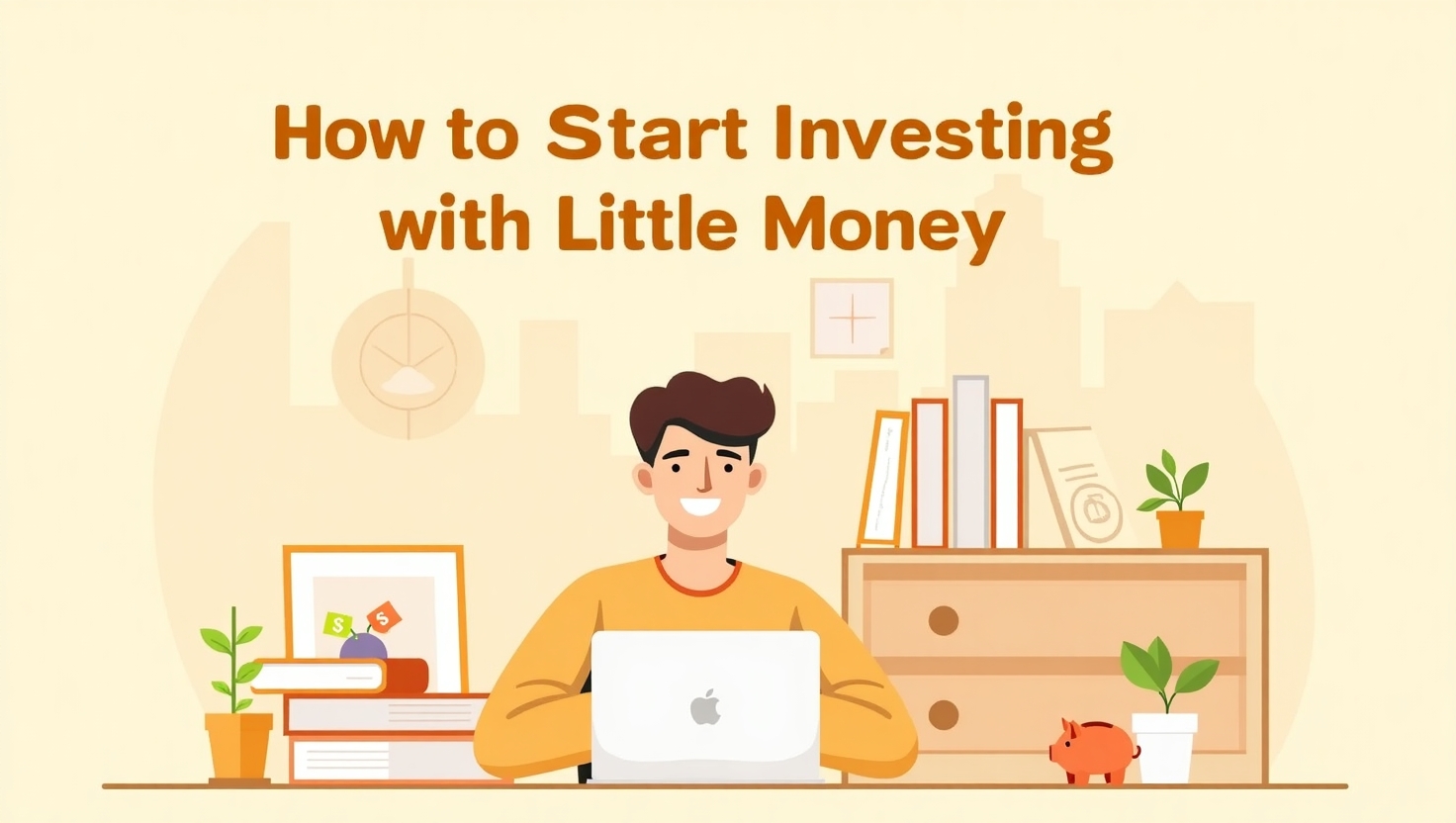How to Start Investing with Little Money: A Beginner’s Guide to Building Wealth
Have you ever felt like investing is only for the rich? That you need thousands of dollars to start? Here’s the truth: you can absolutely start investing with little money—even with as little as $5 or $10. In fact, thanks to modern tools and platforms, the barriers to entry are lower than ever.
This guide will walk you through exactly how to start investing with little money, the smart strategies you can use, and how to grow your investments over time. Let’s get your money working for you!

1. Why You Should Start Investing – Even with Just a Little
You might think, “What difference will $10 make?” A lot, actually. The earlier you start, the more time your money has to grow through compound interest. Even small amounts invested regularly can turn into something significant over time.
“Don’t wait to invest. Invest and wait.” – Unknown
By starting now, you’re not just growing money—you’re also building the habit that separates financial winners from the rest.
2. Myths About Investing with Little Money
Let’s bust a few myths that hold people back:
-
Myth: You need thousands of dollars.
Truth: You can start investing with just $5 using micro-investing apps. -
Myth: Investing is risky and complicated.
Truth: Smart investing with diversified assets is manageable and less risky than you think. -
Myth: Only financial advisors understand investing.
Truth: You can learn and start with simple tools.
So, now that we’ve cleared that up, let’s talk about the how.
3. Open a Brokerage Account with No Minimum
The first step in learning how to start investing with little money is to choose the right brokerage.
Best options for small investors:
| Platform | Minimum Investment | Key Features |
|---|---|---|
| Robinhood | $0 | Commission-free trading |
| Fidelity | $0 | Fractional shares, trusted brand |
| Charles Schwab | $0 | Great educational resources |
| Webull | $0 | Real-time data, technical tools |
These platforms allow you to buy fractional shares, so you don’t need to buy a full share of Amazon or Tesla to get started.
4. Try Micro-Investing Apps
Micro-investing apps are perfect for beginners who want to start small, invest passively, and build good financial habits.
Top Micro-Investing Apps:
-
Acorns – Rounds up your spare change and invests it automatically.
-
Stash – Lets you invest as little as $5 in stocks and ETFs.
-
SoFi Invest – Offers commission-free trading and no account minimum.
These apps simplify investing, letting your money work in the background without needing to check your account every day.
5. Use a Robo-Advisor
If you’re not comfortable picking stocks or ETFs yet, let a robo-advisor do it for you. These are automated platforms that build a diversified investment portfolio based on your goals and risk tolerance.
Popular Robo-Advisors for Small Investors:
-
Betterment
-
Wealthfront
-
SoFi Automated Investing
Most robo-advisors require low or no minimum to start. They also rebalance your portfolio automatically to keep you on track.
6. Invest in ETFs and Index Funds
When you’re just getting started, it’s smarter to invest in broad market funds rather than individual stocks.
Why ETFs and Index Funds are Ideal:
-
Diversified: One fund gives you exposure to hundreds of companies.
-
Low cost: Fees are usually lower than mutual funds.
-
Reliable: Over the long term, they often outperform active investors.
Some solid beginner-friendly ETFs:
-
Vanguard S&P 500 ETF (VOO)
-
SPDR S&P 500 ETF Trust (SPY)
-
iShares Core MSCI Total Market ETF (ITOT)
You can buy a fraction of an ETF share with as little as $1 on most platforms.
7. Start a High-Yield Savings and Investing Combo
Before going all-in on investing, build a small emergency fund in a high-yield savings account (HYSA). That way, your investments can stay untouched even during financial hiccups.
Pro Strategy:
-
Keep 1–3 months’ expenses in a HYSA.
-
Invest a fixed amount (even $10) every week or month into your brokerage account.
-
Automate both – set it and forget it.
8. Consider Dividend Stocks for Passive Income
Once you’re comfortable, start exploring dividend-paying stocks. These companies pay you cash just for owning their shares.
Example dividend stocks:
-
Coca-Cola (KO)
-
Johnson & Johnson (JNJ)
-
Procter & Gamble (PG)
Even if you invest $50 in dividend stocks, you’ll start earning small passive income. Reinvest it, and you’ll build wealth faster.
9. Use Dollar-Cost Averaging (DCA)
Don’t try to time the market. Instead, use Dollar-Cost Averaging—a strategy where you invest a fixed amount regularly (e.g., $20 weekly), no matter what the market is doing.
Benefits:
-
Reduces the impact of volatility.
-
Makes investing a habit.
-
Smooths out market ups and downs.
Even if you’re only putting in small amounts, consistency pays off big time.
10. Grow with Side Hustles and Boost Your Investments
Want to invest more money over time? Start a side hustle to create extra income just for investing. You can:
-
Freelance on Fiverr or Upwork
-
Sell products on Etsy
-
Offer services locally (tutoring, pet walking, etc.)
Use that extra income to supercharge your investments—even $100/month can grow to thousands over time.
11. Track Your Investments Like a Pro
Even if you’re starting small, it pays to track your progress. Use tools like:
-
Personal Capital (now Empower) – Net worth tracker.
-
Yahoo Finance – Portfolio tracking.
-
Spreadsheet or Google Sheets – Custom tracking.
Set simple goals like:
-
Invest $50/month
-
Reach $500 in your account
-
Buy your first ETF or dividend stock
Every small milestone builds confidence.
12. Learn as You Go
While your money grows, grow your mind too. Learning how to invest wisely is a lifelong skill.
Best beginner resources:
-
The Intelligent Investor by Benjamin Graham
-
I Will Teach You to Be Rich by Ramit Sethi
-
YouTube channels: Graham Stephan, The Plain Bagel, Andrei Jikh
-
Podcasts: BiggerPockets Money, The Ramsey Show
Knowledge turns small investments into powerful assets.
Conclusion: Start Small, Dream Big
You don’t need to wait until you’re rich to start investing. The key is starting—even with just $10. By using tools like micro-investing apps, ETFs, and robo-advisors, anyone can learn how to start investing with little money.
Consistency is the real magic. Invest small, learn daily, and keep going. In 5–10 years, you’ll look back and thank yourself.

